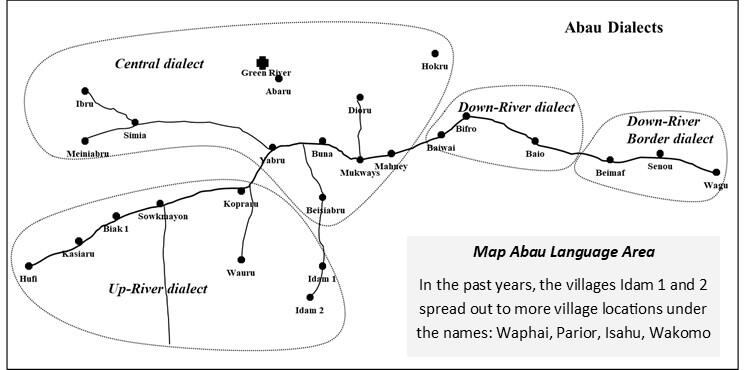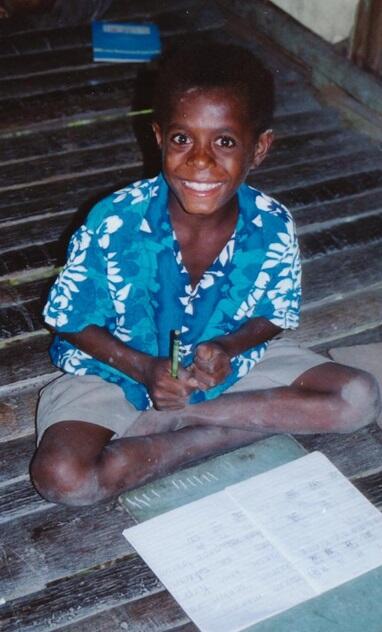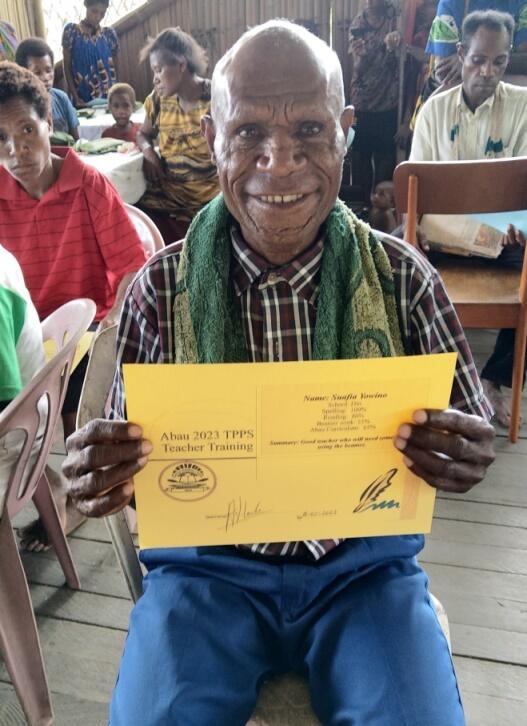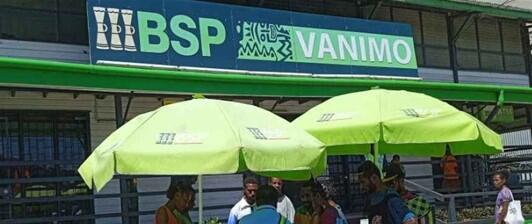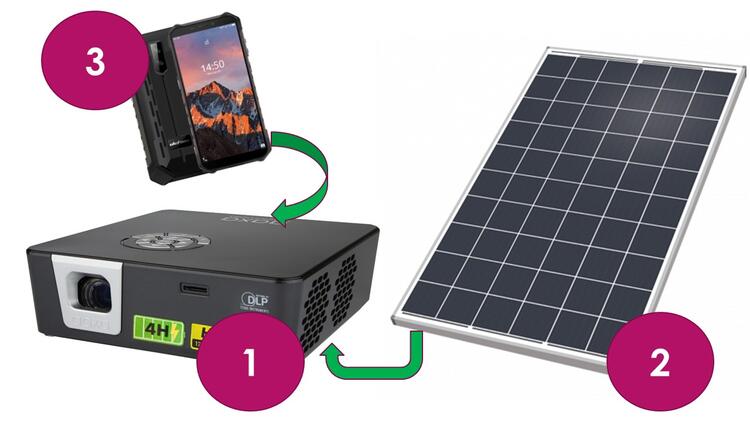About the Abau language area
The Abau language is spoken in villages along the Sepik River, starting with the most upstream village Hufi (at the border with West Papua) till the most downstream village Wagu (at the border between West and East Sepik. It is also spoken in villages along the tributaries of the Sepik, most importantly, along the Green River with Ibru as the most upstream village and also the Idam river where Wakomo the most upstream village is.
Language speakers and dialects
The estimated number of Abau speakers is 20 000, but various dialects are recognized. Two translations of the New Testament have been published. One for the Central Dialect in 2006 and one for the Lower-River dialect in 2015. The latter under the auspices of a different organisation, New Tribes. Two other dialects (Idam and Upper-River Dialect) are sufficiently different to be recognized as separate dialects. However, the current Abau school curriculum is only available in the Central Dialect and used by all schools, including those in the other dialects.
Participation from local communities in Abau Schools:
Local communities need to contribute to the Abauschools in the following way:
1. The village community needs to build and maintain a school building. In this tropical forest area, buildings can be erected with readily available bush materials including a thatched roof of sago leaves. Most schools are on posts for protection against river flooding.
2. The village community needs to be involved in the selection of teachers of their local school
3. The local school needs to have a committee of parents who write quarterly reports on the functioning of the school, teachers’ attendance and performance and the state of the school grounds.
4. The parents of the school children need to pay yearly school fees which needs to be brought to the School Project’s office in Yabru village where also the Training Centre is located. School fees are kept low and are basically used to pay the volunteer teachers an allowance.
Teacher with Teaching Certificate
Teaching commitment of teachers
All Abau Teachers are volunteers. For that reason, the Abau Literacy Program wants two teachers per class who take turns in teaching a term of 10 weeks. Experience has shown that teaching four full terms is too much a burden on a teacher’s village existence that also requires time-consuming task as house building, making canoes, gardening, hunting, fishing, food preparation, etc.
Teacher Training
New teachers are normally trained for a period of three weeks in how to use the Abau curriculum with its existing school books, Big Books and Teacher Guides. More training modules follow in the form of in-service training (twice a year).
Small allowance payment for volunteer teachers
All community supported Abau schools collect school fees. Currently 25 Kina per child per year needs to be brought to the Abau Office in Yabru village. The Abau Office uses that money to give allowances to the ABAU teachers for the number of terms taught and also some extra money when the teachers took good care of the schoolbooks. Class size does not impact the height of the given allowance, but reported teacher attendance does. The amount will be less when the teacher was not present during all ten weeks of each term.
Robert Naiha, Abau Project Treasurer
Financial monitoring
The Abau Project Treasurer Robert Naiha sends monthly reports by email to Arjen and Maija Lock that include all expenses related to the Abau Schools but also all other financial transactions of the Abau Project & Training Centre.
The project also has its own BSP bank account in Vanimo that is monitored by Arjen Lock, the Abau Project Administrator Alex Nomben and the Abau Project Treasure Robert Naiha.
BSP Bank in Vanimo
School supplies
The Abau Literacy Program provides the schools with chalk, blackboards, pencils and exercise books. The new teachers also get training in how to use the data projector as a preparation for the time that their school is issued a data projector (in 2024 for new schools).
School book distribution combined with teachers’ training
Since the Abau literacy program has limited funds for the printing of new schoolbooks, it is mandatory to get maximum use out of existing Abau schoolbooks. The underlying principle is that the schoolbooks remain the property of the Abau Literacy program. Individual schools can borrow books for two terms at a time. The implication is that they need to come twice a year to the Abau Training Centre. Once to get the books for Term 1 and 2, and a second time for the books for Term 3 and 4. In order to get new schoolbooks, teachers need to hand in the books they used in the last two terms.
The needed exchange of schoolbooks requires most of the teachers to travel long distances. For that reason the exchange of books is combined with the need to give in-service training to the local Abau teachers. The result is that all teachers have two in-service training periods per year.
Best storage for schoolbooks
The humid tropical climate is hard on schoolbooks. The books also travel long distances within the Abau Area. It is not a good option to leave books that are not in use in the villages, because cockroaches and sometimes insufficient protection against rain could damage the schoolbooks. Experience has shown that unused schoolbooks are better cared for at the Abau Training Centre than in village school buildings. Secondly, books can only be re-issued to other schools when these books are back in storage. We want to encourage the teacher to return books in the best state possible.
It is very hard to be strict with volunteers for ‘forgetting’ to return the schoolbooks. The following approach is used: the Abau Literacy Program team wants schoolbooks to be returned and wants to express appreciation to the teachers for their work. These two intentions are combined in a small monetary reward system for returned books. The teacher receives an extra payment for the fact that he or she has used the Abau school materials well and returned them safely. If books are missing, the teachers receive less compensation. This system has worked very well and schoolbooks get rarely lost.
Solar Data Projector Sets.
Beginning in January 2023, the Abau Literacy Program started to equip Abau schools with a data projector that runs on solar power. The complete three-year Abau curriculum exists in digital form on a mobile phone and the contents (including video and sound) can be displayed wirelessly. The Abau Literacy Program only issued solar data projectors to schools that had operated well in 2022 in terms of teachers' presence; handling of school fees; Community Board supervision and adequate end-of-year student results.
As for 2023, data projector sets were placed in 13 villages. These solar sets were received with great enthusiasm and final instructions were given to teachers and community how to handle and protect the equipment.
A data projector and solarpanel plus phone with Abau curriculum
Ownership and function of Solar Data Projector Sets:
The equipment (solar panel, data projector, phone, sound box) remains property of the Abau Literacy Program and each year it will be decided whether a school can continue to use the equipment based on given requirements.
The solar data projector set is an extra tool to teach the Abau Curriculum. It is not a complete replacement of the curriculum in book form. A teacher should be able to teach with and without the data projector set. Therefore, teachers continue to be trained on how to teach with blackboard, chalk, printed books, Big Books, etc.
